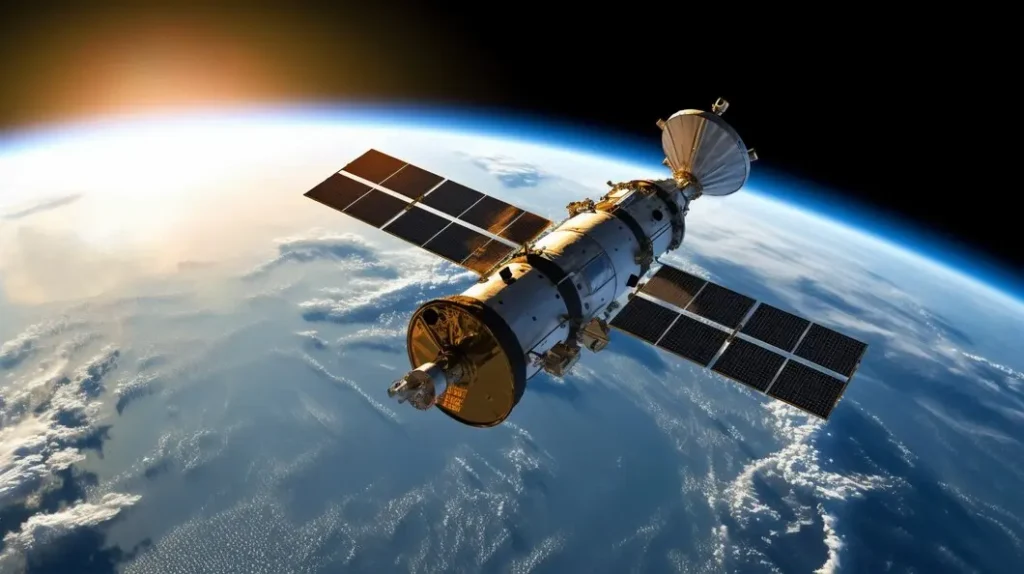Muscat, Oman — In a landmark achievement, the Sultanate of Oman has successfully launched its first satellite, marking a significant milestone in the nation’s journey into space exploration. The OL-1 satellite, developed by the Omani space startup Oman Lens, was propelled into orbit aboard China’s Kinetica 1-Y5 rocket on November 11, 2024, from the Jiuquan Satellite Launch Center in the Gobi Desert.
A Vision Realized: Oman’s Foray into Space
The successful deployment of OL-1 signifies Oman’s commitment to embracing advanced technologies and establishing a foothold in the global space industry. Equipped with artificial intelligence capabilities, the satellite is designed to collect high-resolution data and images, which are pivotal for various applications, including urban planning, forestry monitoring, and disaster management.
The journey to this accomplishment began in November 2020 when Oman pledged to launch its first satellite by 2024, with the private sector spearheading the initiative. Oman Lens, at the forefront of this mission, has not only realized this goal but also plans to launch a constellation of satellites over the next five years. These efforts aim to develop new technologies for smart cities and enhance data analysis in collaboration with international partners.
Technical Aspects and Launch Details
The OL-1 satellite, also known as IRSS-1, was developed in collaboration with China’s Institute of Remote Sensing Satellite (IRSS) under the Chinese Academy of Sciences and Oman Lens. The satellite’s integration with artificial intelligence allows for rapid data processing directly from space, enabling swift analyses crucial for decision-making processes.

The launch was facilitated by CAS Space, a commercial spinoff from the Chinese Academy of Sciences, which successfully deployed 15 satellites, including Oman’s OL-1, in a landmark commercial launch. The Kinetica 1-Y5 rocket lifted off at 12:03 p.m. on November 11, 2024, placing the satellites into their designated orbits.
Strategic Significance for Oman
This historic step propels Oman into an exclusive group of countries with satellite capabilities. As the global space industry expands, countries are increasingly leveraging space-based technologies to enhance communication networks, gather environmental data, and improve disaster response. The OL-1 satellite’s capabilities in monitoring natural resources and assessing climate change impacts can play a crucial role in Oman’s strategic planning and sustainable development.
For Oman, the OL-1 is not merely a technological achievement but a testament to the nation’s vision for diversification and innovation. The Sultanate has been working to reduce its dependence on oil by investing in education, research, and technology. This satellite launch exemplifies the nation’s ambition to become a hub for technological advancement in the Gulf region.
Education and Workforce Development
Oman’s entry into the space industry has also inspired an increased focus on education and skill development. The Ministry of Higher Education, Research, and Innovation has partnered with universities to incorporate space science and technology programs into their curricula. These initiatives aim to cultivate a new generation of scientists, engineers, and data analysts who can contribute to the expanding space sector.
Experts believe that such exposure can motivate students to pursue careers in space research, robotics, and artificial intelligence. Oman Lens has announced plans to establish research collaborations with international space agencies, offering internship programs for Omani students to gain hands-on experience in satellite technology.
Regional and Global Collaborations
Oman’s entry into space has opened avenues for regional and global collaborations. The Sultanate is keen to strengthen ties with international space agencies to advance research and develop shared projects. Collaborating with countries like China, known for its rapid advancements in space technology, allows Oman to access cutting-edge expertise and resources.
In addition to China, Oman is exploring partnerships with regional neighbors, including the UAE, which has an established space program. Joint missions, technology exchange, and data-sharing agreements can foster a collaborative space ecosystem in the Gulf region.
Future Prospects and Ambitions
The launch of OL-1 is just the beginning of Oman’s ambitions in space. Oman Lens has outlined a five-year plan to launch additional satellites, creating a comprehensive constellation capable of extensive data monitoring. These future missions aim to support environmental conservation, agriculture, and urban planning through precise data analysis.
The government envisions the development of a national space agency to coordinate space research, policy formulation, and industry regulation. Such an agency would not only streamline Oman’s space initiatives but also position the country as a leader in the Middle East’s space industry.
Public Response and National Pride
The launch of Oman’s first satellite has been met with enthusiasm and pride across the nation. Social media platforms were abuzz with congratulations, celebrating the achievement as a testament to Omani ingenuity and progress. Many citizens view this achievement as a symbol of the country’s advancement and potential to lead in technological innovation.
Conclusion: A New Era for Oman
Oman’s successful satellite launch marks the dawn of a new era for the Sultanate. As the nation steps confidently into the realm of space exploration, it sets an example for innovation, education, and technological growth. The OL-1 satellite not only serves as a tool for data collection but also as a beacon of inspiration, signaling Oman’s aspirations to reach new heights in science, technology, and beyond.



